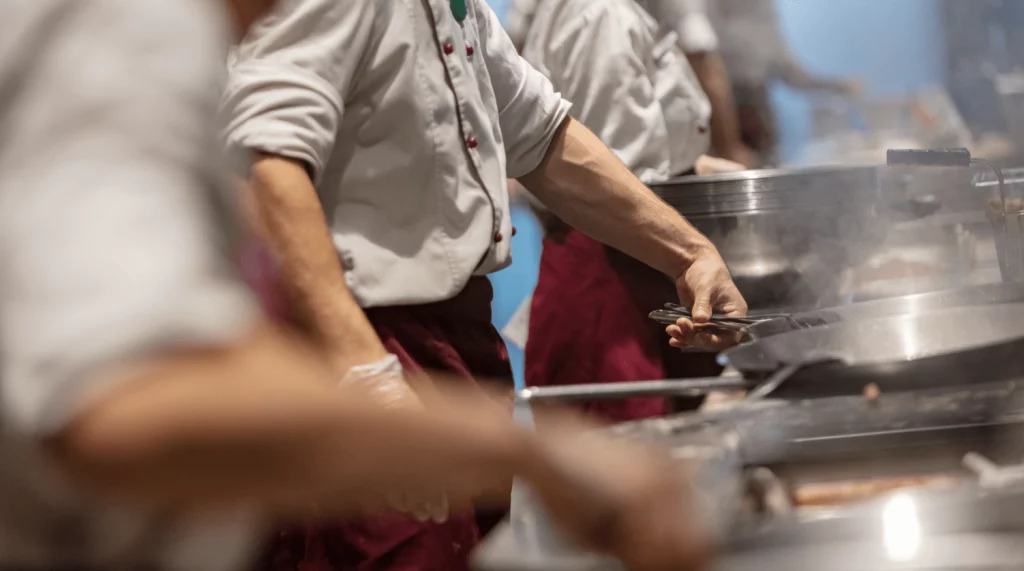Discover what a ghost kitchen is and why they’ve gained popularity
Ghost kitchens got their start in the late 1990s but have recently become popular due to the threat of the pandemic in traditional restaurants. Let’s take a look at what a ghost kitchen is and how they work.
What Is a Ghost Kitchen?
The term ghost kitchen categorizes foodservice businesses without dining areas that offer delivery and, occasionally, takeout. Most ghost kitchens use third-party delivery services to receive orders and get meals to customers.
The ghost kitchen business model helped restaurateurs get through the hard times caused by the coronavirus pandemic. They remain relevant in the post-pandemic food service landscape because they allow operators to meet new consumer expectations, reduce operational costs, and provide easy menu expansion.
Ghost kitchens are also called:
- Virtual kitchen
- Cloud kitchen
- Dark kitchen
- Virtual restaurant
- Digital kitchen
- Online kitchen
- Remote kitchen
- Shadow kitchen
- Delivery-only kitchen
- Satellite kitchen
The Concept
The business model involves serving customers ordering their meals remotely, either through a website, application, or third-party platform.
Virtual restaurants can also offer a point of sale and online ordering systems that feature popular delivery platforms. Starting a delivery platform ghost kitchen is significantly cheaper than brick-and-mortar setups. Nonetheless, food, labor, delivery, packaging, and operational costs are still part of the venture.
How Do Ghost Kitchens Work?
Typically, ghost kitchens prepare meals when they’re ordered in a commercial kitchen that doesn’t have a dining area. Setting up a delivery service is costly, so most cloud kitchens use third-party delivery services.
Since these types of kitchens can’t rely on walk-in customers, they create a strong social media presence and invest in digital advertising tactics. Virtual restaurants are not home chefs selling their wares online, nor are they distributors of prepackaged foods. They operate on the same scale as sit-down restaurants and craft unique menus.
Many virtual kitchens operate out of a commissary kitchen. A commissary kitchen is a complete commercial kitchen space that is available for rent. While you can share a commissary kitchen, most virtual restaurants rent private commissaries because they need the space at different times than other typical commissary users.
Are Ghost Kitchens Profitable?
As of 2021, there were over 100,000 ghost kitchens operating worldwide, and the U.S. ghost kitchen industry is estimated to reach $96 billion by 2030. This indicates that online kitchens are an extremely profitable business venture. They are a particularly profitable alternative to owning a dine-in restaurant in high-rent areas saturated with eateries.
Virtual restaurants save money on startup costs, building upkeep, and front-of-house staff. In fact, ghost kitchens can operate with a 20-40% lower rent cost compared to traditional restaurants. Upmenu states that average profit margins range from 15% to 25% of total revenue. However, most food service ventures need one to three years to turn a profit. Adopt a long-term approach and develop a sustainable delivery-only business model to capitalize on growing demand.
Advantages of Ghost Restaurants
Here are some advantages of operating a ghost restaurant over a traditional eatery:
Concept Flexibility: Being digitally based means you can change your restaurant concept without having to update signage or decor.
Adjustable Menu: If want to experiment with a new dish, an ingredient becomes too expensive, or produce goes out of season, you can swap out the bill of fare items without having to reprint your menu.
Smaller Investment: Many expensive aspects of operating an on-premise dining establishment (such as decor, signage, dinnerware, and seating) don’t apply to virtual restaurants.
Reduced Staff: Satellite kitchens eliminate front-of-house staff, allowing operators to focus on hiring and keeping quality chefs and investing in premium ingredients and appliances.
Ghost Kitchen: The Future of Dining
Following the Coronavirus pandemic, many restaurants were forced to close doors amidst calls for social distancing. Some restaurants have reopened, but their revenue has reduced significantly. Meanwhile, ghost kitchen companies have only become more prominent.
Virtual kitchens are poised to stay for the long haul. They also offer convenience, cut costs, and bear the inherent benefits of eCommerce. Startups can leverage digital technologies to streamline the ordering process, market the brand, and provide reliable customer service.
Reduce Food Waste at Your Restaurant, Increase Your Profits
**Updated April 2024

